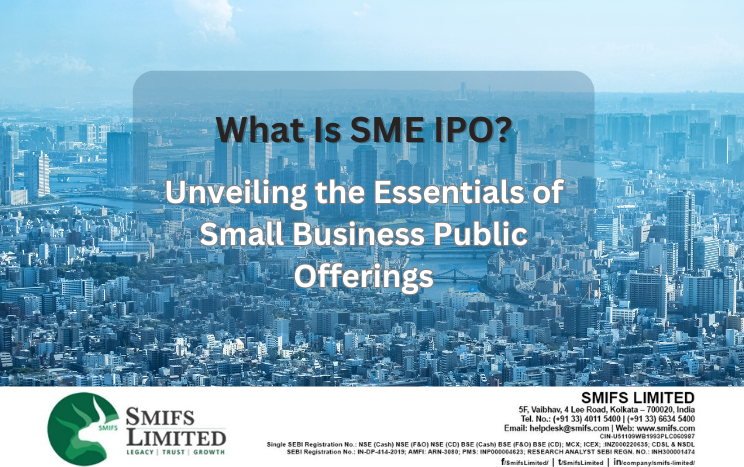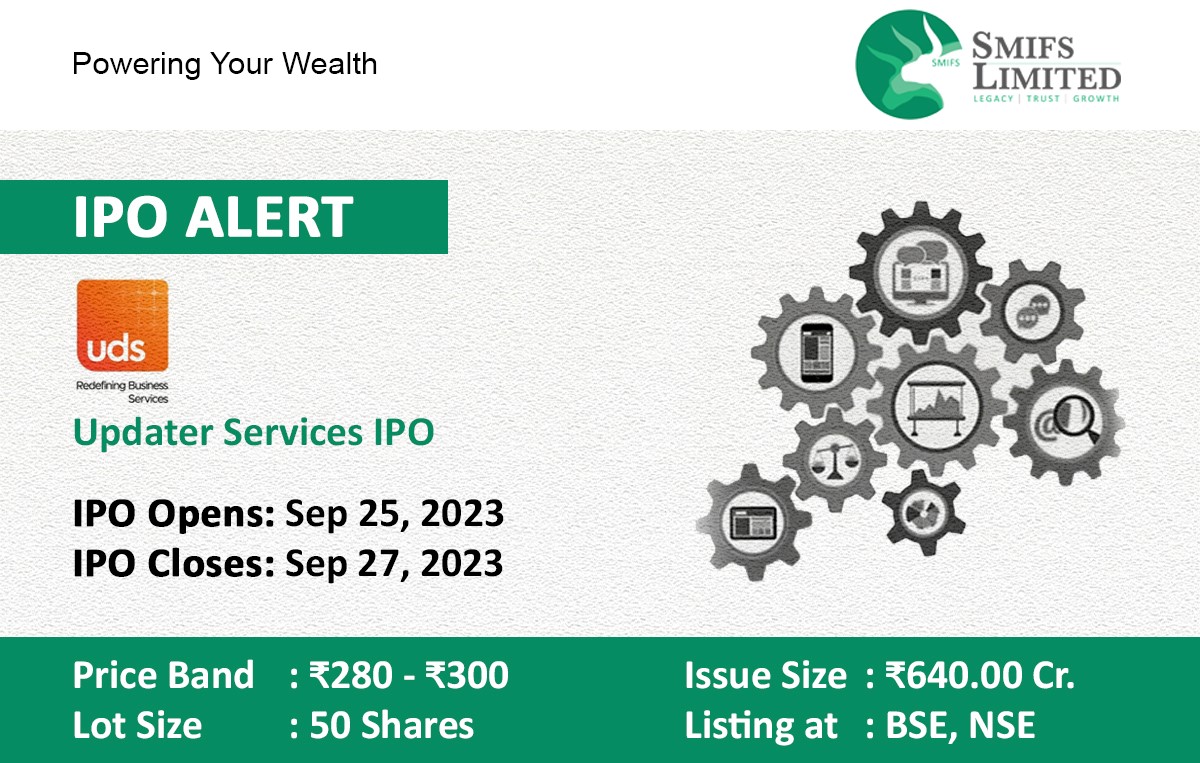If you are wondering what is SME IPO, then we have your answer. An SME IPO, or Small and Medium Enterprise Initial Public Offering, is a mechanism that allows smaller companies to go public and raise funds by selling shares to the general public. This option provides an opportunity for these enterprises to tap into a larger pool of investors. It can be an essential step in their growth journey. Unlike traditional IPOs that are typically associated with larger corporations, SME IPOs cater to the needs of smaller entities looking to expand their business horizons while complying with more tailored regulatory requirements.
The process of launching an SME IPO requires companies to meet specific eligibility criteria. These typically revolve around financial parameters, operational history, and governance standards. Once these are met, companies can proceed with the IPO process. This includes due diligence, regulatory compliance, and marketing the offering to potential investors.
This route offers the dual benefits of enhancing visibility and credibility in the market while providing the necessary funds for expansion. However, it is important for businesses to also understand the risks involved, including market volatility and increased public scrutiny.
Key Takeaways
- An SME IPO allows small and medium enterprises to raise capital through public investment.
- Issuing an IPO involves meeting eligibility criteria, regulatory compliance, and due diligence.
- SME IPOs offer growth opportunities but come with the need to manage risks and market expectations.
Understanding What Is SME IPO
In delving into SME IPOs, you’ll find they offer vital opportunities for growth and serve as a significant conduit for small and medium enterprises (SMEs) to enter the public market. They are distinguished by their focus on smaller, rapidly expanding firms.
Definition
An SME IPO, or Initial Public Offering for Small and Medium Enterprises, is a gateway for your company to raise funds by issuing shares to the public without going through the rigorous processes that larger corporations typically undergo. By doing so, your business gains access to capital that can fuel expansion and innovation.
Importance in the Economy
The role of SME IPOs in the economy is paramount. These financial instruments facilitate your company’s growth, which, in turn, contributes to job creation and economic diversification. They are pivotal in promoting financial inclusivity by allowing smaller ventures to tap into public wealth. As such, the performance and after-market behavior of SME IPOs offer insights into the broader economic fabric.
Comparison with Normal IPOs
Contrasting SME IPOs with traditional IPOs unearths key differences. Firstly, eligibility criteria for SME IPOs are tailored to the unique needs of your smaller venture, with reduced regulatory requirements and costs. Investor base often differs as well. While a normal IPO targets the larger public, SME IPOs may appeal to a niche set of investors. These distinctions are important for you to understand where your company fits and how it can benefit from the public markets.
Eligibility and Process
When embarking on an SME IPO, your understanding of the eligibility criteria and the multifaceted process is paramount. This section seeks to guide you through the essential prerequisites and well-defined procedures, ensuring your journey towards an IPO is smooth and compliant.
Eligibility Criteria
Eligibility Criteria rely on the size of your company and its financials. To list on platforms like BSE SME or NSE EMERGE, your company must have post-issue face value capital in a specific range. For BSE SME, this is between INR 3 crore and INR 25 crore. At NSE EMERGE, your post-issue paid-up capital should not exceed INR 25 crore. Adequate profitability, net tangible assets, and track record are essential benchmarks that you are expected to meet.
Preparation and Documentation
In Preparation and Documentation, begin with drafting a Red Herring Prospectus (DRHP), a vital document outlining your company’s operations and financials required by the Securities and Exchange Board of India (SEBI). Your Prospectus should detail the business, offering, management, financial situation, and risks. The DRHP is filed with SEBI for its observations. Moreover, you will need to register your company with the Registrar of Companies (ROC).
SEBI and Stock Exchange Roles
SEBI and Stock Exchange Roles encompass approval and oversight in the SME IPO journey. SEBI’s regulatory framework ensures your offer complies with the standards to protect investors’ interests. It scrutinizes the DRHP before allowing it to translate into a final prospectus. Subsequent to SEBI’s approval, you will apply to the appropriate stock exchange, be it BSE SME or NSE EMERGE, which conducts further reviews to ascertain your suitability before listing.
Benefits and Risks
When considering an SME IPO, it’s vital to weigh the potential benefits against the inherent risks. An IPO can offer a pathway to increased capital and growth opportunities, but it also carries the possibility of significant challenges.
Advantages for SMEs
Access to Capital: The primary advantage for your company in going public is the access to capital that can be used for expansion, research, and development or paying down debt. An IPO can be a critical step for your business to secure the necessary funding that private sources may no longer provide.
Enhanced Visibility and Credibility: Once your business goes public, it typically enjoys an increase in visibility which can help to attract new customers and retain existing ones. Your company’s credibility is also enhanced amongst suppliers and potential partners as being listed can be seen as a sign of stability and success.
Potential Gains for Investors
Investment Opportunities: For investors, SME IPOs can offer the opportunity to invest in potentially high-growth companies at an early stage. There’s a chance for investors to realise significant gains if the company performs well post-IPO.
Portfolio Diversification: Investing in SME IPOs can help investors diversify their portfolios, spreading risk across various sectors and mitigating potential losses from any single investment.
Associated Risks
Market Volatility: SME IPOs can be subject to significant market volatility. Investors must be prepared for the potential for rapid fluctuations in share price, which can be driven by market sentiment as much as by company performance.
Liquidity Risks: The shares of smaller companies may be less liquid, making it challenging for investors to sell their shares without affecting the share price significantly. This risk means that investors should be prepared for the possibility that they might not be able to realise the capital from their investment when desired.
Regulatory Framework and Compliance
As you navigate the SME IPO landscape, you must understand the regulatory framework and compliance requirements mandated by the Securities and Exchange Board of India (SEBI). These norms ensure fair practices and transparency in the financial markets, specifically tailored for your small and medium-sized enterprise (SME) during the listing process.
SEBI Guidelines
SEBI provides specific guidelines for SMEs looking to issue an IPO. Your enterprises must adhere to these regulations, which are designed to protect investors while offering a simplified compliance regime compared to that of larger companies. Key highlights include relaxed norms for overallotment, reduced minimum application size, and the requirement for market makers to enhance liquidity in your SME shares post-listing. It’s essential for you to follow the Innovations in new venture financing: Evidence from Indian SME IPOs to stay updated on the latest regulatory requirements.
Listing Obligations
Upon listing, you must meet the listing obligations as per the SEBI (Listing Obligations and Disclosure Requirements) Regulations, which are a notch less stringent for listed SMEs. To maintain your listing status, ensure your enterprise is compliant with periodic financial reporting, minimum trading lot size adjustments, and corporate governance norms as per the Companies Act. Adherence to these protocols boosts investor confidence and could positively influence the performance of SME IPOs. A closer look at the The EU prospectus regulation and its impact on SME listings may provide you with comparative insights on the EU’s regulations and their impact on the SME segment.
Continuous Disclosure
It is crucial that you commit to continuous disclosure. Regular release of operational, financial, and corporate information keeps the investing community well-informed. Disclosures such as material events, shareholding patterns, and financial results are part of this ongoing process. Importantly, the Companies Act requires detailed annual disclosures, including director’s reports and audited financial statements. Understanding and implementing robust disclosure practices, as highlighted in Corporate Disclosure as a Transaction Cost: The Case of SMEs, is indispensable for sustaining trust and ensuring statutory compliance.
Post-IPO Considerations
After a company’s initial public offering (IPO), there are several critical aspects you must consider to ensure the ongoing success and compliance of the newly public entity.
These include vigilant performance tracking, seamless market integration, and planning for future financial initiatives.
Performance Tracking
Your company’s performance in the stock market post-IPO will be scrutinised by various stakeholders.
It’s imperative to establish procedures to track the track record of the company’s financial health and market performance.
Regularly monitoring metrics like the post-issue paid-up capital and market cap can provide you with valuable insights into your company’s standing in the competitive landscape.
These insights can guide strategic decisions for expansion and growth.
Market Integration
Successful market integration post-IPO necessitates maintaining compliance with stock exchange regulations and ensuring that the IPO allotment process has been transparent and equitable.
You need to actively manage the company’s application size and capital structure to stabilise your presence in the secondary market.
This will foster confidence among investors and regulatory bodies alike.
Future Financial Initiatives
Planning your future financial initiatives involves considering multiple avenues for raising capital.
Whether it’s additional share offerings, bonds, or other financial instruments, align these with your company’s long-term growth objectives.
Keep in mind that every initiative requires thorough preparation and adherence to regulatory requirements to maintain investor trust and market credibility.
How to Apply for SME IPO
When you’re considering an SME IPO, understanding the application process is critical.
As an investor, to participate in an SME IPO, you must have a demat account.
The steps to apply are delineated below:
- Open a Demat Account: Your first step is to open a demat account if you don’t already have one. This is where your securities will be held electronically.
- Understand Eligibility: Before applying, ensure that you meet the eligibility criteria set out for SME IPOs, which may differ from that of standard IPOs.
- Procure the Application Form: Acquisition of the application form can typically be done through brokers, investment platforms, or sometimes directly from the company’s website.
- Application Process:
- Fill in your details, such as the quantity of shares you wish to apply for and your demat account information.
- Ascertain the investment amount, which should align with the minimum and maximum limit set for retail investors.
- Payment Method: Choose your payment method. You can opt for cheque payment or online transfer, ensuring funds are available for the transaction.
- Bid Placement: In the IPO application, you will place a bid within the price range provided. It’s important to make a well-informed bid based on thorough research.
- Verification and Submission: After verifying all details, submit the completed application form through your broker or using the online platform.
- Await Allotment: Once the application period concludes, if your bid is successful, shares will be credited to your demat account. The allotment process might take a few days post the closure of the IPO.
Documentation Requirements may include KYC forms and proof of identity and address. It’s advisable to have these documents ready to streamline the application procedure.
Frequently Asked Questions
When looking into SME IPOs, the specifics matter. Here are direct answers to common inquiries about SME IPOs that will guide your decision-making process.
What are the eligibility criteria for an SME IPO?
For an SME IPO, your company must meet certain financial thresholds; typically, these include a record of trackable operational history and an adherence to the regulatory financial requirements established by the exchange.
How does the pricing for an SME IPO get determined?
Pricing is often decided by the company in conjunction with its financial advisors based on several factors, including market demand, competitive analysis, and financial performance.
In what manners does an SME IPO in India operate?
An SME IPO in India operates under a regulatory framework set by SEBI, aimed at allowing smaller enterprises to raise capital with cost-effective compliance and a streamlined process.
What steps should be taken to sell shares acquired in an SME IPO?
You can sell your shares through a broker who is a member of the SME exchange, ensuring that you comply with any holding period requirements set for the SME IPO shares.
How does the SME platform differ from the mainboard IPO?
The SME platform is tailored for smaller companies with lower capital requirements and lighter regulatory burdens, compared to the rigorous processes of the mainboard IPO.
What is the minimum investment required to participate in an SME IPO?
The minimum investment varies, but it is generally set higher than mainboard IPOs to ensure that investors are serious and capable of taking on the risks involved.
What is cut off price in ipo?
The cut-off price in an IPO is the final price at which the securities are sold, often determined after considering the bids and investor interest in the IPO book-building process.
What is ipo cycle?
The IPO cycle involves stages from the pre-IPO planning, documentation, filing with the regulators, and roadshow to the actual pricing, allocation of shares, and eventual listing.
What do you understand by ipo cycle?
Understanding the IPO cycle is about recognising the chronological process that a company undergoes to transition from a private entity to a public one, culminating in the listing of its shares on the stock market.
How to buy pre ipo shares
To buy pre-IPO shares, you must typically be an accredited investor and purchase through private placements, company-approved transactions, or secondary market platforms specialising in pre-IPO shares.
How to apply for ipo in hni category
To apply for an IPO in the HNI (High Net-worth Individual) category, you must invest over a certain threshold—usually considerably higher than what retail investors invest—and often through a separate application process.
How to invest in sme ipo
To invest in an SME IPO, you should have a demat account, meet the investment minimums, understand the associated risks, and actively monitor SME platforms for upcoming opportunities.
Can we sell SME IPO on listing day?
Yes, you can sell SME IPO shares on the listing day. You can do this if there are no specific lock-in periods and if you abide by the trading rules of the SME exchange platform.












